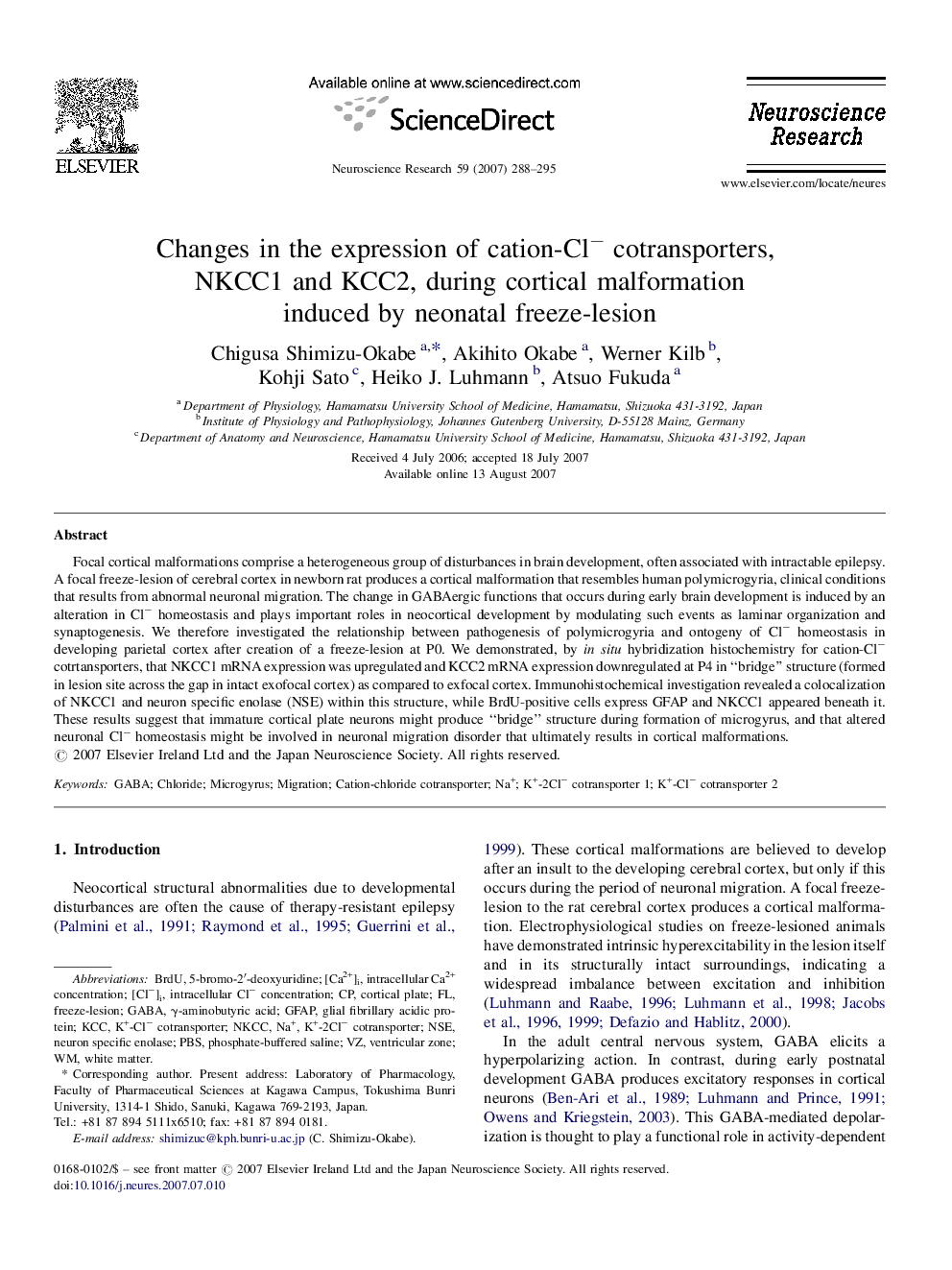| Article ID | Journal | Published Year | Pages | File Type |
|---|---|---|---|---|
| 4352405 | Neuroscience Research | 2007 | 8 Pages |
Focal cortical malformations comprise a heterogeneous group of disturbances in brain development, often associated with intractable epilepsy. A focal freeze-lesion of cerebral cortex in newborn rat produces a cortical malformation that resembles human polymicrogyria, clinical conditions that results from abnormal neuronal migration. The change in GABAergic functions that occurs during early brain development is induced by an alteration in Cl− homeostasis and plays important roles in neocortical development by modulating such events as laminar organization and synaptogenesis. We therefore investigated the relationship between pathogenesis of polymicrogyria and ontogeny of Cl− homeostasis in developing parietal cortex after creation of a freeze-lesion at P0. We demonstrated, by in situ hybridization histochemistry for cation-Cl− cotrtansporters, that NKCC1 mRNA expression was upregulated and KCC2 mRNA expression downregulated at P4 in “bridge” structure (formed in lesion site across the gap in intact exofocal cortex) as compared to exfocal cortex. Immunohistochemical investigation revealed a colocalization of NKCC1 and neuron specific enolase (NSE) within this structure, while BrdU-positive cells express GFAP and NKCC1 appeared beneath it. These results suggest that immature cortical plate neurons might produce “bridge” structure during formation of microgyrus, and that altered neuronal Cl− homeostasis might be involved in neuronal migration disorder that ultimately results in cortical malformations.
